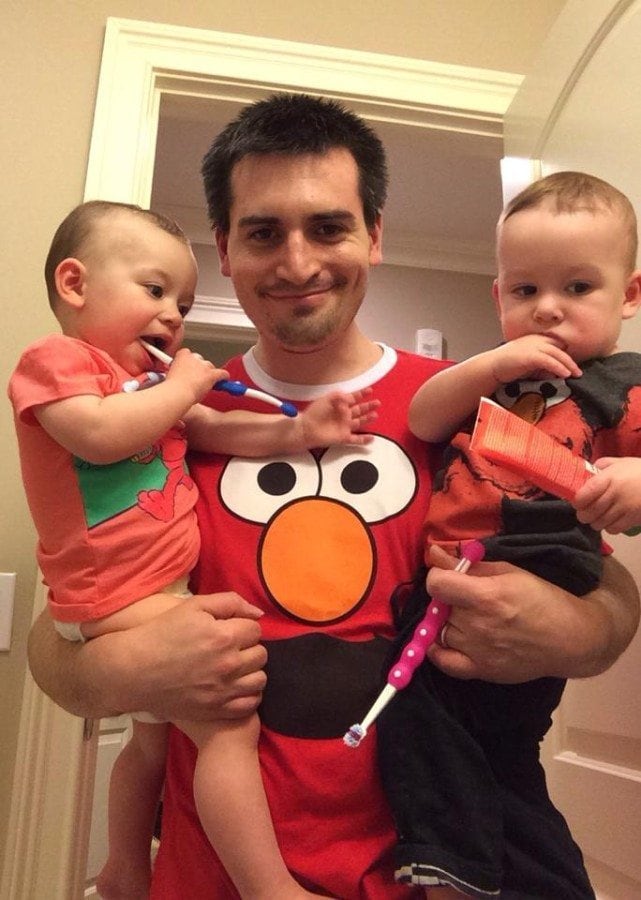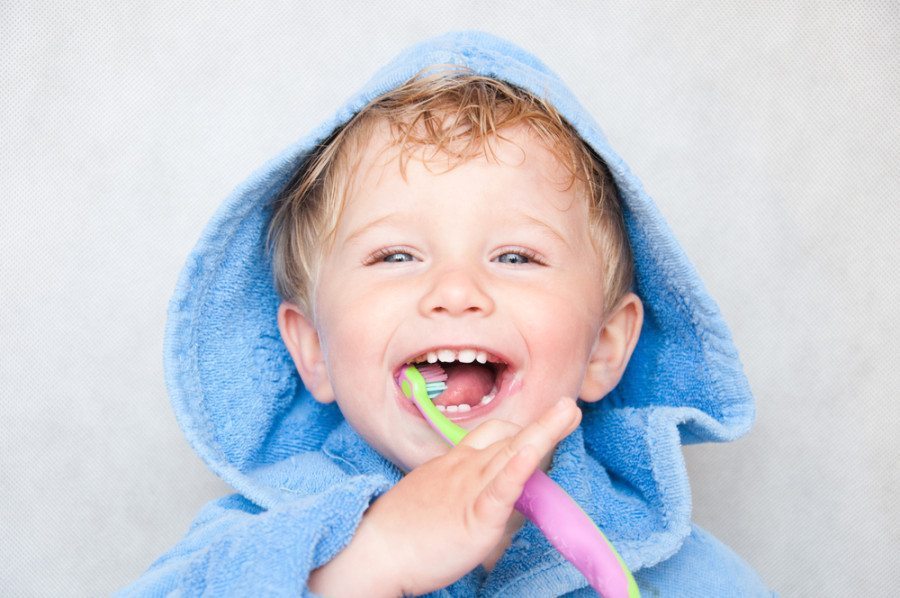Last updated on February 12th, 2024 at 03:00 pm
So it’s time to introduce your twins to tooth brushing and you’re not quite sure how to go about it? We’ve got a few tips for toddler tooth brushing and guidelines to guide you through the process!
Oh happy day! Your twins are teething and you are now overjoyed with adding yet another to-do to your seemingly endless list. Once your children’s teeth start erupting, you should start brushing with them to help establish a routine. Since every child is different, you may find yourself implementing different techniques depending on the day or the child. Do your best to try and make this a fun experience with your kids. They will feed off your energy so if Mommy and Daddy are excited to brush and floss, they will be excited as well.

Congratulations! Your independent toddlers no longer want you to brush for them and that’s okay. Let them have a turn brushing as long as you explain you get a turn after. We recommend that you ‘follow-up brush’ your children’s teeth until age 8. Young children do not grasp the idea of spitting while brushing their teeth and will swallow a majority of the toothpaste so be sure to only use a “smear” or “rice sized” amount of paste. The American Dental Association (ADA) changed their guidelines in 2014 and now recommends that parents use fluoridated toothpaste as soon as their first tooth comes in. This will help reduce the risk of early childhood cavities. You should brush with them every morning and every night.
Bedtime can be a struggle in any home especially with several small children. Rather than brushing right before bed, a suggestion we make to parents is brushing after dinner or the last snack of the night. This can reduce the night-time hassle of getting everyone ready for bed AND their teeth brushed. Night-time brushing is essential to keeping your toddlers teeth healthy. Everything they ate and drank throughout the day is coated on their teeth and going to bed with a clean mouth will help reduce the risk of cavities. You will also want to avoid putting your children to bed with a bottle. If this is unavoidable the bottle should only be filled

By age two, all twenty of your children’s baby teeth will have erupted. This is a great time to try and start flossing with them. Any teeth that are side by side and touching will need to be flossed. A technique to help you accomplish this mission will be to lay your little one down on a bed or a couch. It will give you the same vantage point dentists and hygienists have while your child is in the dental chair. Another suggestion is have them stand in front of you while facing away from you with their heads tilted towards the ceiling. As with anything the more you guys work at this the easier it will become.
The ADA recommends you should schedule your first dental visit when your little ones first get teeth or by age one. What you can expect from your first dental visit at that age is what we refer to as a “baby exam”. The doctor will meet with you and you children, review their health histories and discuss any concerns you may have about their teeth. Most children at the baby exam will cry so prepare yourself. However, crying will at least ensure their mouth is open! By the time children are two and half years old most are ready for their first cleaning. Finding a pediatric dentist that specializes in seeing young children will help reduce the potentially stressful situation for both you and your children. You can go to the American Academy of Pediatric Dentist website to help find a local pediatric dentist in your area. (https://www.aapd.org/finddentist/)
THIS CONTEST HAS ENDED







